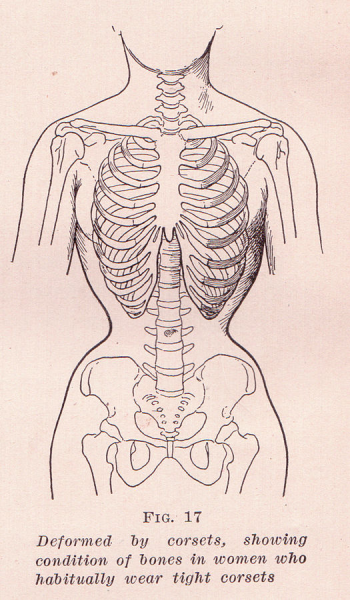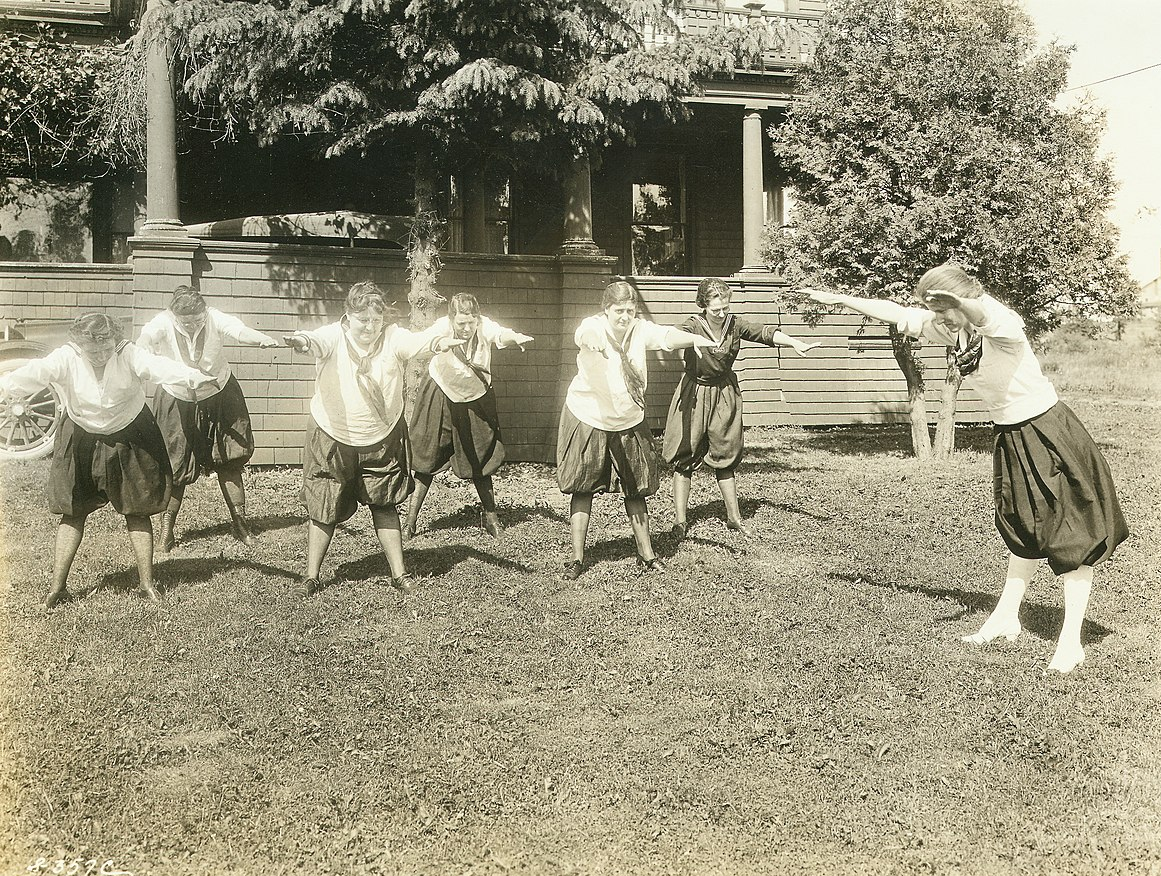It’s a good climbing tree. The branches are low and sturdy enough to support your weight. Unfortunately, your movements are restricted by heavy skirts made of several feet of fabric and a tightly laced corset. Even if you could tie up the skirts, you wouldn’t be able to breathe well enough to pull yourself up. Your mother told you that this is how proper ladies dress, but you hate it. You don’t understand why.
During the Victorian period, which lasted from 1837 to 1901, women’s fashion mostly consisted of corsets and heavy fabrics. They were modeled after the outfits worn by Queen Victoria, who was England’s monarch at the time. Victorian-era dresses were made in styles that limited the movement of the wearer. They were heavy and restrictive. The style of the time was to wear clothing that accented the curves of the wearer, but it was an uncomfortable practice.
Women dressed like this as a way to indicate their social status. Wealthy women who could afford to stay home all day were expected to look after their households and care for their husbands. A big heavy dress made it impossible to perform any hard labor, so people who wore those types of dresses were seen as wealthy.
Women who had to work wore variations of this style, which was made possible by industrialization. New technologies allowed the process of making clothing to become faster and cheaper, which meant people from more walks of life had access to the time’s fashions.
While many embraced the styles of the time, others began to rebel. The dress reform movement was a push in women’s fashion toward less restrictive clothing. It coincided with the Industrial Revolution and the beginnings of the women’s suffrage movement. The introduction of new technologies and the need to learn how to use them during this period encouraged new ways of thinking. New ways of thinking led to reforms.
Reforms in America started with bloomers. Janice Formichella, in her blog Recollections writes that in 1851, Elizabeth Smith Miller (nicknamed ‘Libby’), became frustrated with gardening in her long skirts. She created an outfit consisting of long pants and a skirt that came down a few inches below the knee. She then shared them with her cousin, suffragist and abolitionist Elizabeth Cady Stanton, who loved them.
Amelia Bloomer, who was a friend of Stanton and Miller, wrote about the new outfit in her newspaper, The Lily. This popularized the garment and gave it the name “bloomers.” Bloomers were adopted by other women with similar values, as well as those who were involved in movements such as women’s suffrage.
During this time period, women re-evaluated their place in society, resulting in reforms outside of fashion. Several groups of women advocated for different causes, such as reforming dress, employment, education, and even birth control.
A famous supporter of dress reform in America was Mary Edwards Walker. Walker was a child of free-thinking parents, and she grew up in America wearing bloomers and going to school. She eventually earned a medical degree and volunteered as a surgeon in the Civil War. Walker supported the dress reform movement, famously wearing pants and a top hat in public. In regards to her style, she said “I don’t wear men’s clothes, I wear my own clothes.” Walker was the first and only woman to win the National Medal of Honor.
Back across the Atlantic in England, the Rational Dress Society was founded in 1881. The members were focused on the promotion of practical clothes that allowed for movement. Lady Frances Herberton, a member of the society, became famous when she sued the owner of a cafe in 1899 for refusing to let her sit at a table in the main area because she was wearing pants.
The corset was a controversial garment during the Victorian era, as many supported it, but others pushed for its demise. During the dress reform movement, women attributed numerous ailments to a tightly laced corset. These included tuberculosis, breast cancer, reproductive issues and problems with digestion. While many of these ailments proved to have other medical causes, corsets did have the ability to change the rib cage’s shape, reduce the capacity of the wearer’s lungs, and weaken the wearer’s chest and back muscles.

Despite the negative effects they had on women’s bodies, many were reluctant to give up their corsets. For one thing, many women were just used to wearing them and did not see the physical harm. For another, the styles of the time emphasized the waist, and corsets helped women achieve their desired silhouette.
Additionally, it was difficult to wear trousers or bloomers in public since many women who did wear them were ridiculed and tormented. Some of the women who supported bloomers decided to revert to skirts for various reasons. Libby Miller preferred more fashionable clothes, and even Amelia Bloomer herself abandoned them!
According to Encyclopedia Britannica, women had worn pants when they joined the workforce during the World Wars, but the idea of women wearing pants in public wasn’t fully accepted until the 1970s. While it may seem as though Victorian styles have become a thing of the past, they never truly disappeared from the fashion world.
Take goths, for example. The goth boutique Inchoo Bijoux published an article mentioning that the idea of the goth aesthetic became popular in the late 1970s, around the time pants were finally being accepted. The author, Astrid Apissoghomian, asserts that “Early Gothic fashion had its roots in Victorian and Edwardian fashion, borrowing their romantic and mourning aesthetics. Goths embrace lace, corsets, flowing fabrics, layering, creating dramatic and ethereal looks.” While there are many subsections of gothic fashion, some groups of goths today continue to wear Victorian fashions, choosing to wear long dresses and extremely feminine accessories.
Another genre of fashion that exhibits a powerful Victorian Influence is Steampunk. “It’s all about taking an element from the Victorian area and drawing inspiration from it,” Formichella writes. In other words, an outfit doesn’t need gears, corsets and goggles to be steampunk. It just needs to be a twist on something Victorian, for example, by adding steampunk jewelry to a Victorian-inspired outfit.
Corsets have also made a comeback in fashion design. One recent fashion trend is the Corset Hoodie. Jessica Testa wrote in The New York Times that it was introduced into the brand Mugler’s collection in 2022, and the artist Bad Bunny wore one in April 2023. The style is becoming more popular, with several different designers and stores selling their own versions and variations.
In a 2016 article from Recollections, film lecturer and freelance journalist Anna Battista described fashion as something that “proceeds in cycles; so specific trends will keep on returning after so many years.” This can be connected to the resurgence of the corset in fashion that year, evident in Miuccia Prada’s 2016 fall collection. The question is now how the corset is being portrayed. It can be used along with restrictive clothing as a way to keep women down, or it can be used as a way to express feminist ideas.
Even though we might end up circling back around to them, we’ve come a long way from Bloomers. Today, you see people of all genders wearing a variety of styles and garments. The most important thing the dress reform movement gave to us is the ability to choose to dress this way. Not to do it because it’s what’s proper, not because it’s the style, but to do it because it makes the wearer happy.
Victorian-era dresses were made in styles that limited the movement of the wearer. They were heavy and restrictive. The style of the time was to wear clothing that accented the curves of the wearer, but it was an uncomfortable practice.


